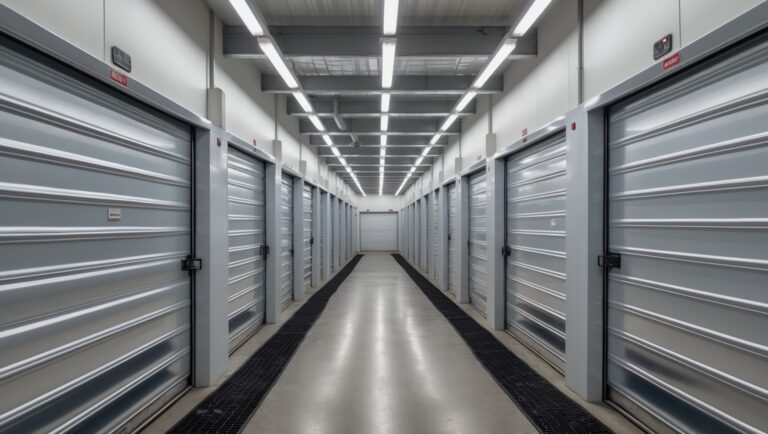Moving Company Website Optimization: Proven Strategies for More Bookings
Introduction: Why Website Optimization Matters for Moving Companies
In today’s digital-first landscape, your moving company’s website is more than a digital business card—it’s the foundation of your customer acquisition strategy. For movers and storage providers, a well-optimized website can be the difference between a calendar full of bookings and a business struggling with inconsistent leads. Yet, many moving company websites are plagued by outdated designs, unclear messaging, slow load times, or simply don’t guide visitors smoothly toward a booking. This comprehensive guide will walk you through proven website optimization strategies tailored for moving and storage businesses. From technical SEO and local visibility to conversion-focused design and persuasive content, you’ll discover actionable steps that move the needle—literally—on your bookings. Whether you’re a small local mover or a multi-location storage operator, these insights will help you transform your website into a lead-generating powerhouse.
Understanding the Customer Journey
Mapping the Path from Search to Booking
Before diving into technical tactics, it’s crucial to understand your customers’ mindset. Most moving clients start with a problem: “I need to move or store my belongings.” Their journey typically follows these stages:
- Discovery: Searching for movers or storage facilities online.
- Research: Comparing services, reading reviews, checking pricing, and evaluating credibility.
- Decision: Reaching out for quotes, asking questions, and booking services.
Your website must address each stage, providing clear information, building trust, and making it easy to take the next step.
Technical Website Optimization Fundamentals
1. Fast, Mobile-First Design
With over 70% of searches now on mobile devices, a mobile-optimized site is non-negotiable. Use responsive design frameworks and test your site using Google’s Mobile-Friendly Test. Pages should load in under three seconds—even on cellular connections. Compress images, leverage browser caching, and minimize the use of heavy scripts.
2. Secure and Reliable Hosting
SSL encryption (HTTPS) is essential for trust and SEO. Choose a reputable hosting provider with 99.9% uptime, daily backups, and fast server response times. A secure, reliable site reassures both customers and search engines.
3. Local SEO Optimizations
- NAP Consistency: Ensure your Name, Address, and Phone number are identical across your website, Google Business Profile, and all directory listings.
- Schema Markup: Add LocalBusiness and Service schema to help search engines understand your offerings and location.
- Location Pages: Create dedicated pages for each service area, optimized with unique content and local keywords.
Content That Converts: Messaging and Trust-Building
1. Clear, Action-Oriented Headlines
As soon as visitors land on your site, they should know exactly what you offer and how to take action. Use headlines like “Professional Local & Long-Distance Movers in [Your City]” and “Get Your Free Moving Quote Today.”
2. Compelling Service Descriptions
Break down your services—residential moving, commercial moving, storage, specialty item moving, packing, etc.—on dedicated, detail-rich pages. Explain processes, what’s included, and benefits. Incorporate FAQs addressing common concerns, such as “Will you move pianos?” or “How do I prepare for moving day?”
3. Trust Signals and Social Proof
- Reviews and Testimonials: Showcase genuine customer reviews, with photos if possible, on key landing pages.
- Certifications and Affiliations: Display memberships in moving associations (e.g., AMSA), licensing numbers, and insurance coverage.
- Case Studies: Share brief stories or before-and-after photos of successful moves or storage projects.
Conversion-Focused Design Elements
1. Prominent Calls-to-Action (CTAs)
Every page should feature clear CTAs: “Request a Quote,” “Book Your Move,” or “Call Now.” Use contrasting colors and place CTAs above the fold, in the navigation, and at the end of each section.
2. User-Friendly Quote Forms
Minimize friction by keeping forms short and intuitive: name, contact info, move date, origin and destination, and an optional note. Use multi-step forms for complex moves but only ask essential questions up front. Enable autofill and mobile-friendly form fields.
3. Click-to-Call and Live Chat Features
Many customers prefer immediate answers. Click-to-call buttons on mobile and live chat widgets can dramatically improve lead capture, especially for last-minute moves.
SEO Best Practices for Movers and Storage Providers
1. Keyword Research Tailored to Your Market
Focus on intent-driven keywords such as “movers near me,” “moving company in [city],” “climate-controlled storage [city],” and specific service modifiers like “piano moving” or “same-day movers.” Use tools like Google Keyword Planner, Ahrefs, or SEMrush to identify high-value terms.
2. On-Page SEO Essentials
- Title Tags and Meta Descriptions: Craft unique, descriptive titles for every page. Include primary keywords and a benefit statement.
- Headers: Use H1, H2, and H3 tags to organize content naturally and include secondary keywords.
- Internal Linking: Connect service pages, blog posts, and city pages with descriptive anchor text.
- Image Optimization: Compress images, use descriptive file names, and add alt text with relevant keywords.
3. Local Link Building Strategies
Build authority with links from local business directories, chambers of commerce, local sponsorships, and partnerships with real estate agents or apartment complexes. List your business in moving-specific directories and encourage mentions in local news or event coverage.
Advanced Tactics: Beyond the Basics
1. Conversion Rate Optimization (CRO)
- A/B Testing: Experiment with different CTA buttons, headline wording, and form layouts to see what drives more bookings.
- Heatmaps and Analytics: Use tools like Hotjar or Crazy Egg to analyze where users click, scroll, and drop off. Adjust layouts accordingly.
2. Retargeting and Lead Nurturing
Not every visitor books on the first visit. Set up retargeting ads via Facebook and Google to re-engage site visitors. Offer downloadable moving checklists or guides in exchange for email addresses, then follow up with a series of helpful, non-pushy emails.
3. Integrating Online Booking Tools
Modern consumers expect the ability to book or schedule consultations online. Consider integrating scheduling software or a booking calendar, allowing clients to reserve move dates or storage units in real time. Sync with your internal CRM to automate confirmations and reminders.
Optimizing for Voice Search and Featured Snippets
1. Voice Search Readiness
With smart speakers and mobile voice assistants becoming commonplace, optimize for conversational queries like “Who are the best movers in [city]?” or “How much does it cost to store furniture near me?” Create FAQ sections using natural language and answer direct questions concisely.
2. Earning Featured Snippets
Format answers to common moving and storage questions in short, structured paragraphs, bulleted lists, or tables. Google often pulls these into featured snippets, giving your site premium visibility.
Accessibility and User Experience (UX) for All Customers
1. ADA Compliance
Ensure your website is accessible to all users, including those with disabilities. Use sufficient color contrast, alt text for images, keyboard navigation, and descriptive link text. Test your site with accessibility tools and address any issues promptly.
2. Easy Navigation and Clear Information Architecture
Organize content logically: Home > Services > [Individual Service Pages] > About > Blog > Contact. Use a sticky navigation menu and a prominent search function if your site is content-rich. Ensure customers can find key information—like pricing, service areas, and booking forms—within two clicks from the home page.
Essential Website Features for Moving and Storage Businesses
- Service Area Maps: Visualize your coverage area with interactive maps so customers instantly know if you serve their location.
- Pricing Transparency: Offer sample pricing tables or explain your quote process. While exact rates may vary, transparency builds trust.
- Instant Quote Calculators: Allow visitors to estimate costs based on move size, distance, and add-on services for faster decision-making.
- Photo and Video Galleries: Showcase your team, equipment, and facility. Before-and-after shots of packed homes or clean storage units reinforce credibility.
- Resource Center: Host moving tips, checklists, blog articles, and FAQs to establish authority and improve SEO.
- Contact Options: Offer multiple channels: phone, email, chat, and a contact form. Display hours of operation and response time expectations.
Measuring Success: Analytics and Continuous Improvement
1. Set Up Comprehensive Analytics
Install Google Analytics 4 and Google Search Console to track traffic, user behavior, and search performance. Set up goals for quote submissions, calls, or bookings. Use UTM parameters to monitor the effectiveness of advertising and referral campaigns.
2. Analyze and Iterate
Regularly review which pages and keywords drive the most leads. Identify bottlenecks—such as high bounce rates or abandoned forms—and experiment with solutions. Solicit customer feedback on your website experience; small tweaks can lead to significant gains in conversion rate.
Conclusion: Turning Your Website Into a Lead-Generating Machine
A moving or storage company website isn’t just a digital brochure—it’s your most valuable sales asset. By investing in technical optimization, local SEO, compelling content, and conversion-focused design, you position your business to capture more leads and turn casual visitors into loyal customers. The moving industry is competitive, but many operators still overlook the power of a high-performing website. By applying the strategies outlined in this guide—from mobile optimization and voice search readiness to advanced CRO and booking integrations—you can outpace competitors and build a steady stream of bookings year-round.
Optimization is not a one-time project; it’s an ongoing process of testing, learning, and adapting to customer needs. Monitor your analytics, stay up to date with SEO trends, and continually refine your approach. As you implement these best practices, you’ll see not just an increase in traffic, but in the quality of leads and the efficiency of your sales process. The result? More moves booked, greater customer satisfaction, and a website that works as hard as you do to grow your business.






